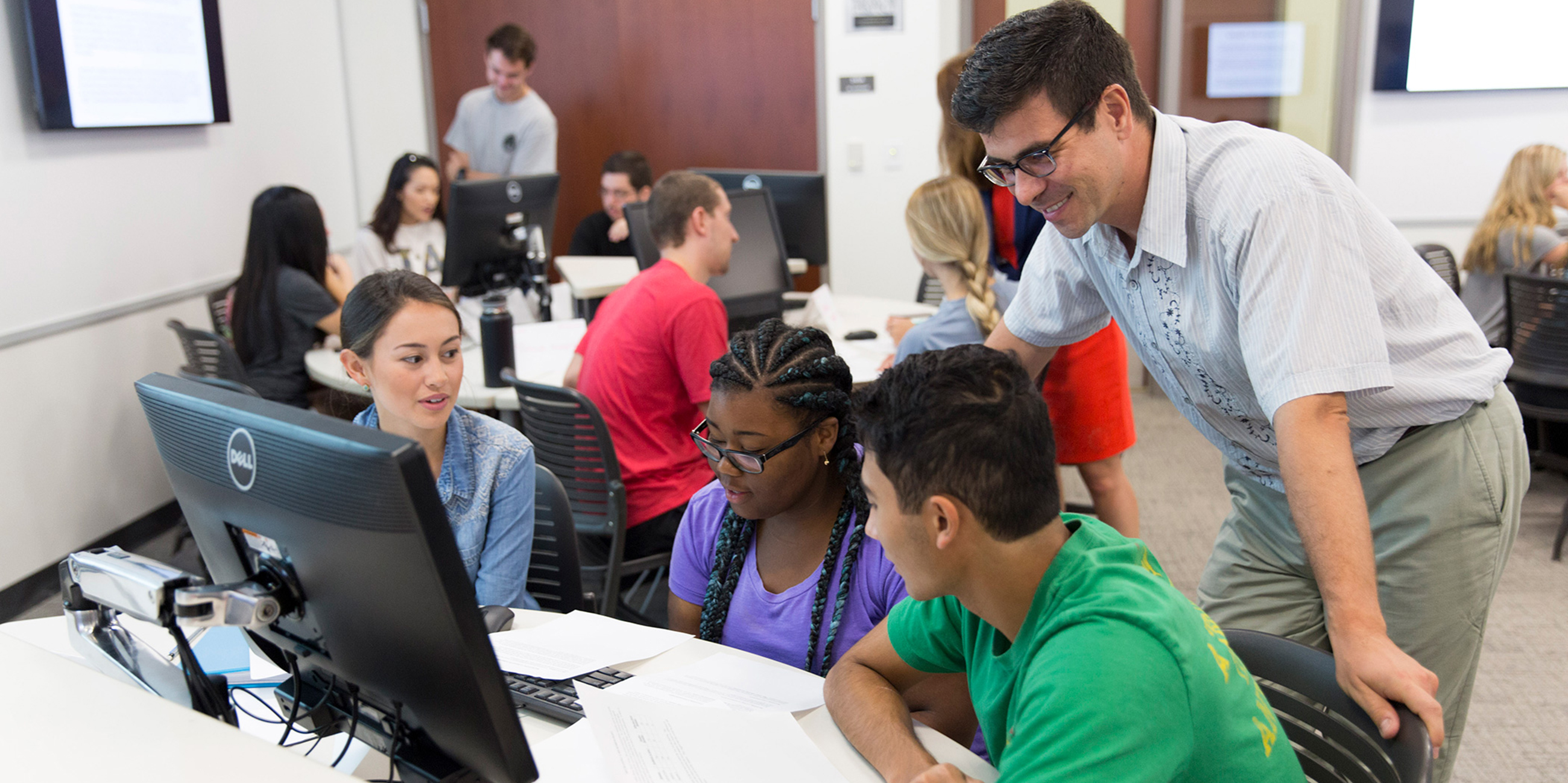UGA’s Science Learning Center was engineered to foster collaboration and problem-solving skills to prepare students for thriving careers in the STEM, or science, technology, engineering and math, fields. The facility, which opened last August, is enhancing the learning environment and addressing the demand for STEM classes at the university.
Part of America’s economic success comes from leading the world in translating discoveries into products, said Timothy Burg, director of UGA’s Office of STEM Education. As the U.S. works to maintain this edge and the state of Georgia looks to secure its economic future, they will rely on a new generation of talented engineers, mathematicians, biologists, chemists and computer scientists who have exceptional skills, imagination and vision.
“Companies must complete projects that have hard constraints, unclear solutions, require multiple disciplines’ perspectives, span multiple countries and governments, extend ethical reasoning and require new technology,” Burg said. “Students who graduate with proven skills in these areas are needed.”
UGA students seem to be answering the call. Nearly one in five UGA students now graduates with a degree in a STEM discipline, and selection of a STEM major is up by nearly 75 percent in the last five years, thanks in large part to the growth of UGA’s College of Engineering.
Given this rising interest in STEM fields, the timing of the 250,000-square-foot SLC was just right. During the fall 2016 and spring 2017 semesters, students filled an average of nearly 13,000 seats in the SLC for instruction per semester. An average of 60 courses across approximately 375 course sections were taught each of those semesters.
But it’s not just the size of the facility that’s been an asset for students. The SLC delivers an optimal learning environment through the building’s design and by professors’ attention to effective teaching strategies.
“The Science Learning Center was designed to incorporate the evolution of teaching with active learning methods, where students are challenged to provide more sophisticated demonstrations of what they have learned, beyond the traditional mastery of facts and techniques, and develop collaboration skills that will help them beyond the classroom,” said Rahul Shrivastav, the university’s vice president for instruction.
Devanshi Nayak, a senior biochemistry and molecular biology student, was a peer learning assistant in Norris Armstrong’s Introduction to Biology course, which was held in one of the 280-seat teaching classrooms. Nayak and other undergraduate students in the Peer Learning Assistant program help foster collaboration, good study habits and productive learning techniques at the SLC.
She was impressed with how the large classroom, with extra spacing between desks and flexible chairs, improved student interaction.
“It facilitates group work when there is a lot of emphasis on collaboration,” she said. “If you want to be a researcher or engineer or any other profession in a STEM field, you have to work well on a team.”
For several years, Brad Barnes had taught his Introduction to Computer Science course in a lecture-style format. In essence, Barnes stood in front of the classroom to explain concepts and answer students’ questions.
With the opening of the SLC, Barnes adapted his teaching style for a SCALE-UP classroom. SCALE-UP, which stands for Student-Centered Active Learning Environment for Undergraduate Programs, combines the philosophy of active-learning instruction with a space designed to create intimate group assignments in a larger-enrollment classroom.
Compared to previous courses taught elsewhere, Barnes noticed a small bump in students’ grades with this new format last year. But more than that, he noticed a new dynamic in the class.
“The thing that is most exciting to me is what you can’t measure,” he said. “Class would end, and students wouldn’t notice. They would be engaged in their work.”
What better evidence that the SLC is living up to its promise?


